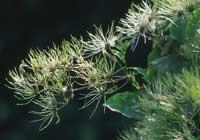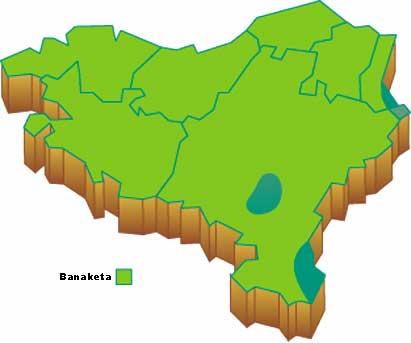Sarstraka gora, Ahien zuria

Most plants are herbaceous, although some are wood or climbers. They are usually haemaphrodites and are distributed mainly in the temperate and warm regions of the Northern Hemisphere, but with an almost cosmopolitan distribution. Inside it houses around 50 genera and 1,800 species, including 28 genera and 146 species in the Iberian Peninsula. It has many toxic species and others are used for decorative purposes.
The genus Clematis that is studied consists of live and generally climbing plants, with the lower wood stem. Of the 6 different species of the peninsula, in the Basque Country there are 3: Clematis vitalva, C. flammula and C. straight object of study.
The white porridge, as indicated, is a climbing plant, with the stem on the bottom of wood and the leaves pinatisecadas all the edge or slightly toothed. The flowers, on the other hand, are found in the paniculite tops. The chips are white or white green. Normally it blooms between June and August.

It appears in hedges, bushes and some forests in almost all of Europe and in Euskal Herria is distributed throughout the geography. It is common on the Atlantic side and is protected in riverside forests and on the southern shores.
This species has been used as a medicinal herb and its components are, among others, anemonol and saponin. It is used to treat headaches and scabs, but its stems and leaves are very irritating and cause large inflammations in the skin. It is said that in the past the beggars used this plant to make wounds in their body. On the other hand, we have known that its branches were used as fuel to make baskets and seeds.
Technical Family: Anunkuláceos Species: |





